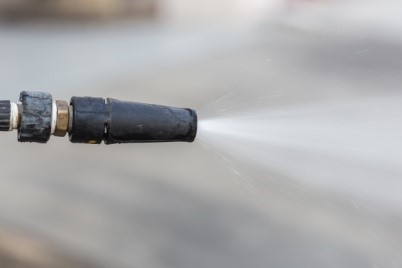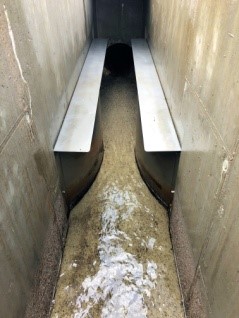If you’re a pressure washing geek, you may already know that Alfred Kärcher developed the first European hot water high-pressure washer. You may even know that the early version of the modern hydraulic pressure cleaning technology wasn’t patented until 1941 by Job Fordyce Malsbary. But do you know all the littler technological breakthroughs that led up to those breakthroughs? Well, hold on tight, because we’re about to do some time travel.

The Pressure
In the 18th century, Italian physicist Giovanni Battista Venturi, an Italian physicist, discovered that the flow of a fluid in a horizontal pipe, when met with a constricted cross-section, decreases in pressure with decreasing constriction. Known as the Venturi effect, this phenomenon assisted the development of things like the atomizer nozzle and modern cityscape (to calculate things like the air flow between buildings).
Although the first mechanical shower (a combination of a manual pump and a tub that poured water at the pull of a chain) was patented in 1767 by the English stove maker William Feetham, the first nozzle-operated shower arrived in the form of the Victorian velo-douche, which poured out water only once prompted by bicycle pedaling (performed by the bather); taking a shower must have felt a lot like a spinning class!
Dutch painter Van der Heyden invented leather hoses and used them for firefighting, but apparently the manufacturing could not be replicated outside of his country until 1818, when the copper riveting process came into being in Philadelphia.
After the nozzles and hoses underwent various transformations, voila—the water spray used in modern pressure washing equipment was born!

The Washing
One of the most common use of pressure washing today is window cleaning. And if it weren’t for glass, there wouldn’t be glass windows. Glass may have been around since ancient Egypt, but washing glass windows, or just windows in general for that matter, seems to have taken longer to emerge. Even after Syrians invented glass blowing, many glass products mainly just consisted of jewels and vessels.
Once stained glass became a thing, rainwater often cleansed the bird guano and other deposits off the windows. But once skyscrapers filled landscapes, a harder scrub was in order. The squeegee (a term speculated to have descended from the word “squeege”), having been borrowed from the nautical field and then adapted for the photography industry, finally became known as the moniker of a window-cleaning tool. In 1936, Ettore Steccone patented the squeegee in the form that we know it to be today.

Caption: Squeezee? Sleezee? No: Squeegee!
The Combination
And when the rubber blade of the squeegees and the drizzle of the water hoses did not seem to get the job done, the maintenance industry turned to something more powerful: something that would come to be known as “pressure washing.” Little did they know that it would birth a whole other industry!
February 7, 2019 at 10:09 pm
Very great post. I simply stumbled upon your weblog and wanted to mention that I
have truly enjoyed surfing around your blog posts. In any case I’ll
be subscribing for your rss feed and I hope you write once
more very soon!